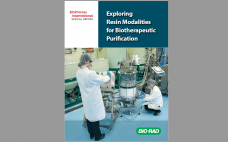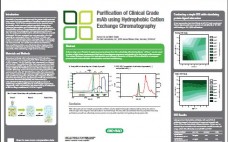New chromatography supports must demonstrate improved selectivity, and bead technologies must be optimized for high binding capacity and product recovery. Drug manufacturers also need access to expertise and continued support from chromatography suppliers that can assist with method development and design of experiments (DoE) assessments. Working together, these industry groups can accelerate method development, increase process yield, reduce buffer consumption, minimize the number of unit operations, and improve overall process economies. Learn more in this Special Report about how resin…
Author Archives: Mark A. Snyder
Ask the Expert on Ceramic Hydroxyapatite Chromatography Media: How to Start
Bio-Rad’s CHT Ceramic Hydroxyapatite XT (CHT XT) calcium-affinity cation-exchange chromatography medium is used for purifying numerous types of biomolecules, with single-step clearance of impurities and aggregates in monoclonal antibody (MAb) purification. This is an easy-to-use mixed-mode medium, which is both ligand and support matrix in one. In an “Ask the Expert” webinar on 18 July 2018, Mark Snyder (manager of the process chromatography R&D applications group at Bio-Rad Laboratories) discussed its application and use at process scale, providing guidelines on…
Purification of Clinical Grade MAb using Hydrophobic Cation Exchange Chromatography Resin
A three-step non-rProtein A capture process shows how the selectivity afforded by Nuvia cPrime resin can be used to clear a light chain contaminant that has a homologous sequence and similar pI to the target MAb monomer. The unique balance between the hydrophobic and charged character of Nuvia cPrime allows for a compact process with reduced buffer consumption and feed conditioning.
Working with a Powerful and Robust Mixed-Mode Resin for Protein Purification
Orthogonal methods for assuring robust downstream purification are critical to today’s demanding downstream process industry. Regulatory scrutiny on the immunogenic propensity of drugs has increased and broadened over the past two decades. Although immunogenicity can come from a number of sources, common concerns include host-cell proteins and aggregates. Constantly lurking in the background are other issues such as viral clearance, DNA levels, and so on. Those problems can be addressed simultaneously with the mixed-mode chromatographic support known as…
Nuvia™ S Media
Increased productivity and reduced costs continue to be the driving forces in process development. Recent advances in upstream processes have dramatically improved the productivity of cell culture fermentation. However, prolonged fermentation and high concentration of monoclonal antibodies (MAbs) at harvest may also lead to product degradation and/or aggregation. Clearing these unwanted by-products remains one of the main challenges in downstream processing of therapeutic MAbs. Media with high binding capacity for target molecules and significant resolution…


